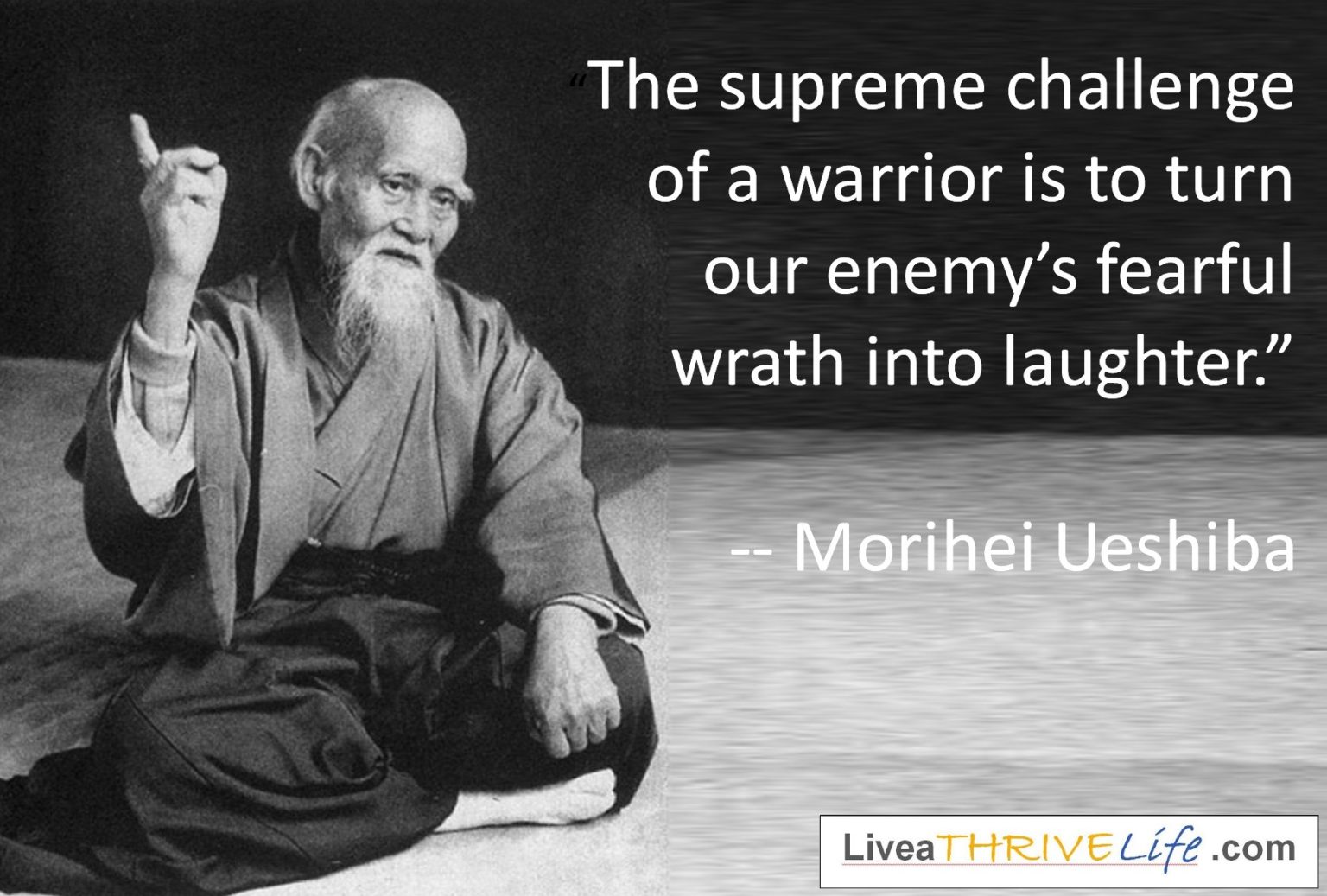
“Study how water flows in a valley stream, smoothly and freely between the rocks.” –Morihei Ueshiba
Morihei Ueshiba, the founder of Aikido, often described this art as being like the flow of water, moving gently around obstacles, working with the current rather than fighting against it. Aikido aims to turn anger, defensiveness, and the tendency to meet aggression with aggression into compassion and empathy.
Conflict can be based on differences of opinion, assumptions, misunderstandings, and different emotional cultures. By using a few basic skills, conflicts can become opportunities for understanding, growth, and re-connection to the flow of your relationship with others.
In Aikido, one of the most important basic movements is Irimi or “entering”, the act of entering an attack and redirecting momentum. This is very different from boxing, where attack is met with block and counter-attack. Transforming conflict into understanding is a similar movement—entering into each other’s viewpoints and realities and in so doing transforming the energy of “attack-defend” into listening and understanding.
7 Steps to turn Conflict into Connection:
Situation, Behavior, and Impact. The intention is to focus the facts and how they impact a particular situation without getting personal or speculation as to the reason for the behavior.
The first step is to lay out the situation, which typically involves a time and place, along with what was happening — so was it in the morning board meeting, or during an afternoon conference call with a client? This specificity provides context for the feedback.
The second part of the process is addressing the behavior — what exactly did the person do that you want to discuss? It’s very important to not read into behaviors, but simply state what you observed. So, you can mention that you noticed someone made a number of mistakes during a presentation – but try not to say something like, “It’s obvious that you didn’t prepare well.” The purpose is to create a dialog, not jump to conclusions. At this point, we don’t know whether it was truly a lack of preparation, or perhaps it was nerves or another issue in the person’s life impacting performance.
Finally, state the impact. Using “I” statements, not “you” statements, this is where you lay out how the behavior impacted you or others. You could say something like, “I felt like our firm didn’t give leave the client with a great impression and I am concerned about our methods of preparation.”
You are not trying to convince the other person of your position. You want to explain how you see an issue in terms of your reality.
Behind every conflict there is a conversation you need to have instead of the fight. The goal is understanding. You cannot get to problem solving until each person feels fully understood to their satisfaction.
Your goal is to understand the other person’s position. Let go of grudges, bitterness, and reacting to triggers. Be attentive to your eye contact, and keep an open body language. Indicate you are listening with a nod or a sound “Yes, I see” “Uh huh.”
Deepen your understanding by moving into your partner’s viewpoint, getting a sense of the emotions beneath the issue. Examples might be, “I would be grateful if you could tell me more about why this issue is important to you?” ‘What do you need?”
“You must be really upset about that.” You do not have to agree with the other person’s views, but you can agree that he or she feel a certain way.
summarize what you saw and heard as their concerns, feelings, and their intentions. When people feel heard, they tend to lower their defenses and become more willing to work out their differences.
Understanding changes conflict into dialogue and compassion. The emotional exchange gained when assumptions transform into understanding offers a real feeling of relief and deeper connection. This is the Aikido of human relationships.
About:
Bernice Ang is an Executive Coach who spent 30 years as a Marketing Executive in Fortune 50 companies. She currently works with high performing professionals to integrate their work and life goals so they can live life on their own terms. For more information, please visit www.liveaThriveLife.com.